Rear window
Host: Robert Johnstone
Many crush side conversations with ringers have entailed a deep discussion about what exactly I do when my arm is inside the rear end of a cow spaying or pregnancy testing. Generally, the questions or observations that are made include something along the lines of, ‘what you just put your hand in, roll it around a little and pull something out?’. Well, not quite. There’s a little more to it than that.
My exposure to the “Great North” had been rather limited before embarking on this career path; however, the philosophies and herd management requirements across all states and territories are fundamentally the same. Our responsibilities; as technicians, ringers, managers, and owners of livestock is to continually ensure a high level of animal welfare is maintained.
The need to implement on farm herd management practises to control mating is as crucial to herd welfare as providing adequate feed and water. Due to the extensive pastoral areas of northern Australia the concept of simply removing a bull from a herd of cows to prevent pregnancy is not an option. Spaying refers to the removal of the ovaries or fallopian tubes in female cattle, and is the primary contraceptive method used in livestock production. While some may question the role of spaying in terms of animal welfare, I can assure them the welfare impacts and production losses associated with not controlling pregnancy in young females and old mature cows in extensive livestock systems far exceeds that of the spaying methodology.
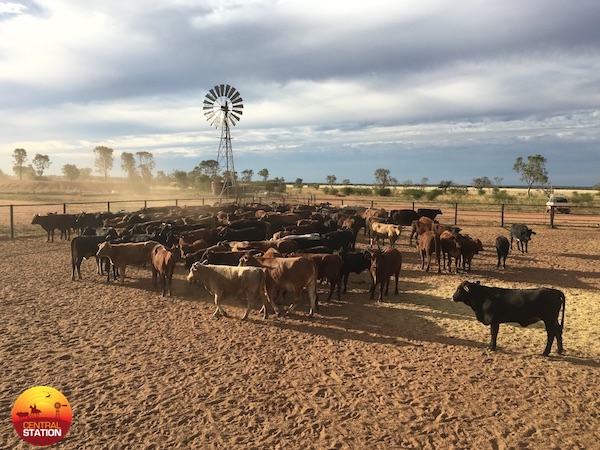 Maiden heifers (young females not yet mated to a bull) showing no signs of stress after being Willis spayed, Mt Isa, QLD.
Maiden heifers (young females not yet mated to a bull) showing no signs of stress after being Willis spayed, Mt Isa, QLD.
There are two primary techniques used for spaying cattle quickly and humanely; the Willis Dropped Ovary Technique (Willis), and the Webbing technique. Individually each technique has it’s merit and place in providing economical long term contraception in cattle. The benefits of such practises enhance animal welfare by eliminating mismanaged pregnancy, calving, and lactation and reducing productivity losses. It is important hygiene is maintained during the procedures and a good antiseptic is used to minimise the risk of infection to provide the best outcomes.
The Willis spay method has been used for many years and involves the separation of the ovaries from the reproductive tract. This prevents the release of hormones necessary for supporting pregnancy. The ovaries are easily located using rectal manipulation, as you would in manual pregnancy testing. The Willis tool is inserted into the vagina and guided through the vaginal wall into the abdominal cavity. The ovaries are then quickly separated from the uterine attachments. The Willis technique is most commonly used to spay young heifers to prevent pregnancy and subsequent risk of dystocia (birthing problems often resulting in death) in heifers not suitable for breeding. In an environment where heifers cannot be routinely monitored for assistance during calving, spaying greatly enhances animal welfare by reducing the number of losses.
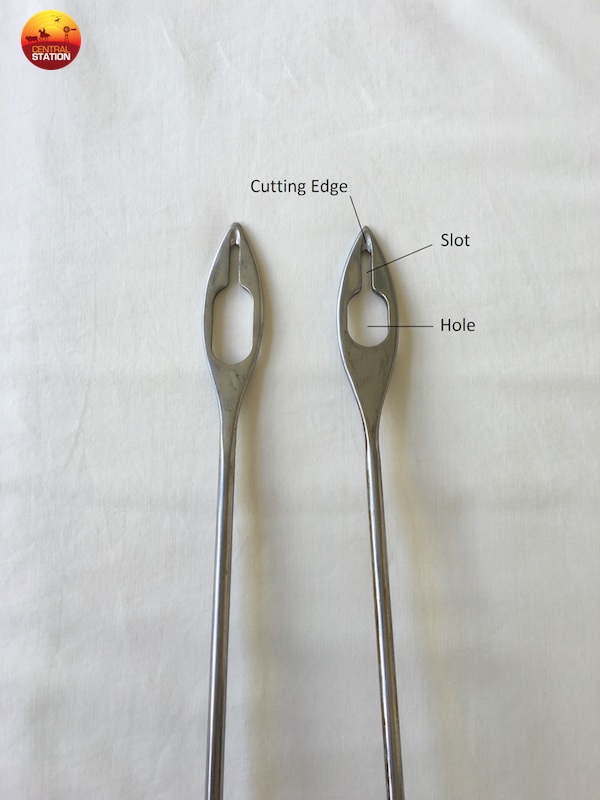 The working end of a Willis tool. The ovaries are placed through the hole and removed by the concealed cutting edge at the end of the slot. Two different size Willis tools are shown here.
The working end of a Willis tool. The ovaries are placed through the hole and removed by the concealed cutting edge at the end of the slot. Two different size Willis tools are shown here.
The Webbing method on the other hand, involves the removal of a small section of the fallopian tube from its attachments to the reproductive tract. This inhibits complete ovulation and prevents the delivery of an egg into the uterine body for conception. A small incision is made two inches back from the cervix on the top of the vaginal wall. The Webb tool is then guided through to locate and remove the fallopian tubes. A great advantage of Webb spaying is the ability to spay a cow whilst pregnant. The hormonal maintenance of the pregnancy is not inhibited with the removal of the fallopian tube, and the cow will successfully deliver a calf at full term gestation (approximately 283 days). Normal cyclic activity will continue to occur postpartum (after birth) as the ovaries remain intact, but the cow cannot fall pregnant again. This is a great benefit to livestock owners or managers, as the capacity to segregate these older or undesirable cows is often impossible.
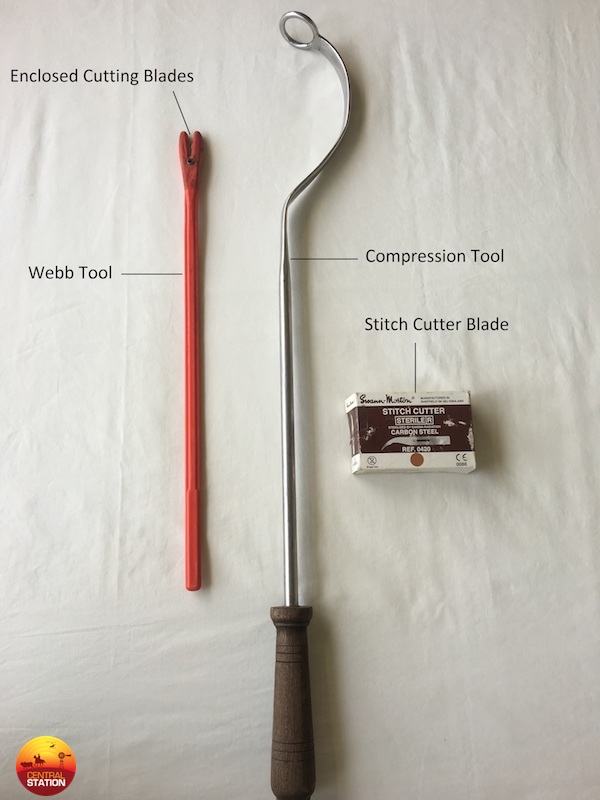 The tools used for the Webb spaying method. The compression tool is used to keep tension on the top of the vaginal wall allowing the incision to be safely made with the stitch cutter blade. The Webb tool removes the fallopian tube with the enclosed cutting blades.
The tools used for the Webb spaying method. The compression tool is used to keep tension on the top of the vaginal wall allowing the incision to be safely made with the stitch cutter blade. The Webb tool removes the fallopian tube with the enclosed cutting blades.
Additionally, Webbing empty (not pregnant) mature cows, also has its advantages. As a cow ages, the internal attachments and tissue surrounding the ovary enlarges and thickens, also increasing blood supply. Separating the ovary from the attachments using the Willis spay method in older cows significantly increases their risk of internal haemorrhaging due to the increased blood loss. The alternative of Webb spaying eliminates such risks, and therefore reduces production losses. The potential the Webb spaying method has to increase animal welfare and productivity is enormous and allows for greater management options. As livestock managers, our continued learning and practise of improving animal welfare will enhance consumer ratification and provide stability in the market.
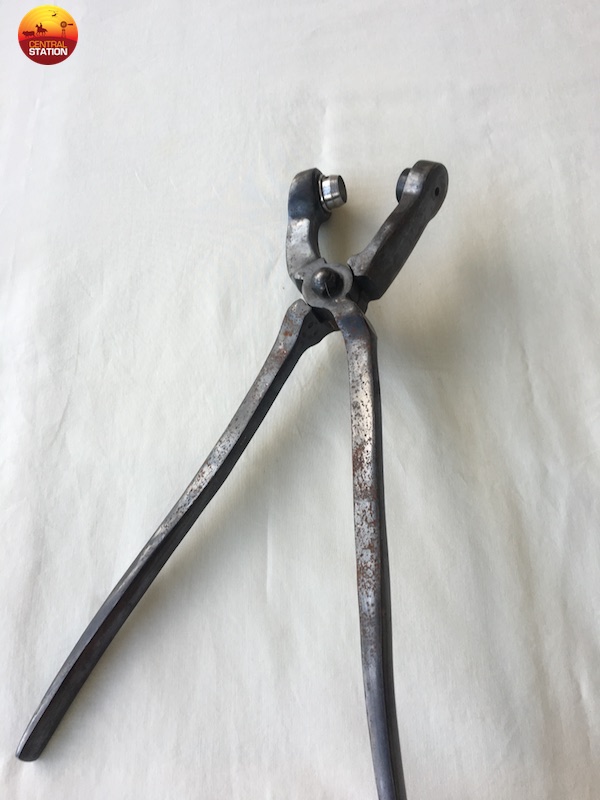 Ear-marking pliers used to punch a circular hole in the ear of an animal after spaying is completed.
Ear-marking pliers used to punch a circular hole in the ear of an animal after spaying is completed.
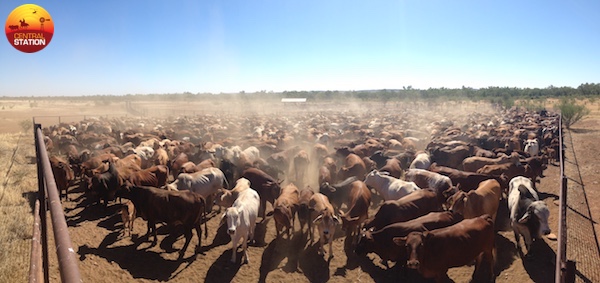 Just a couple to pregnancy test!
Just a couple to pregnancy test!
